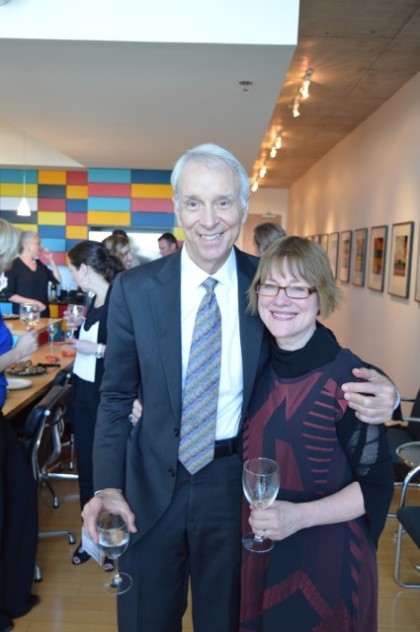Several weeks ago, I hosted a reception at my loft in Austin for Jhane Barnes, the very well known fashion designer. I greatly admire her clothing and sense of design and was delighted to have an opportunity to talk with her for a bit before the event. Combing through my closet earlier, I had found two outdated, thoroughly worn pieces, among the clothes I had that were designed by her: one a vest, the other a winter sport coat. These were clothes I should have stopped wearing years ago, but I like them so much I just cannot not retire them.
I didn’t know much about Jhane the designer (just her great clothes), and I didn’t know anything about her as a person. But I learned a great lesson about design in talking with her. Any kind of designer is so much better if they’re deeply research-oriented, regardless of what industry. Jhane’s work is technically superb; it’s not just about a look. She’s always searching for new tools, new methods and techniques. She’s all about how the design product is made.

One of her distinctive design characteristics is the quality of the fabrics she uses. When Jhane was young, she got a loom and learned the art of making fabric. In her studio she gathered lots of different looms and tested weaving techniques that she could show to the mills that would produce her work.
Jhane always emphasized comfort and how a piece of clothing would sit on your body. Her manufacturing process had to be strongly economy-driven. How the piece was made, sources for fibers and dyes and what all this would cost became driving forces. Additionally, Jhane’s company had to consider where a product was going to be made, allowing for manufacturing variations by country. All of this makes me realize how much the clothing design industry is like the architectural design industry where one has to be very concerned about building and construction materials, production and costs.
What Jhane does and what good architects do are not all that different. I was impressed by how strong her roots are in her industry and how much depth there is to what she does. She pretty much left the men’s fashion scene in 2013; now she’s designing fabrics, flooring, furniture, eyewear, and socks, among other things. We discussed flooring and how much research she does in terms of finding manufacturers. Again, she’s using those same skills she developed as a fashion designer. Just as she had done when she started in fashion design, Jhane transitioned to other design arenas by doing tons of research. She had to learn all about furniture making and floor making and eyewear making, etc.
Overall, I was incredibly impressed with Jhane Barnes as a true designer: someone who is constantly searching, has big ideas and is ambitious for the quality of the products she works on. I admire that immensely!